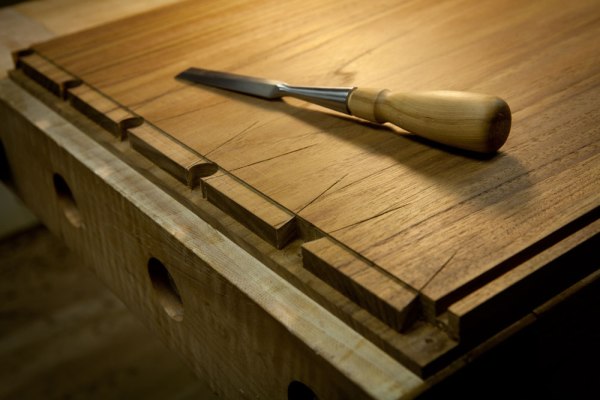The Price of Teak –

Lately I’ve been getting hammered via e-mail because I’m using teak (Tectona grandis) to build my latest campaign chest for an upcoming book. The comments go something like this:
“Don’t you see the hypocrisy in publishing ‘With the Grain’ – a book that advocates using local species – and then using teak in your own project?”
It’s a fair question, and one I struggled with as I embarked on writing a book on campaign furniture. Furniture built in this style was made from a wide variety of tropical and domestic species, however most of the pieces I’ve encountered have been made from mahogany, teak, camphor and (less frequently) English oak.
When I started planning the projects for the book, I toyed with the idea of using domestic species for the projects – walnut, cherry and white oak for the most part. And while that’s an option I plan to present in the book, I decided to go with the historical species for building my projects.
It was a tough decision because I rarely use exotics. If you look at my published work since 1996, I think you’ll find the vast majority of my projects have been built with common domestic species, occasionally to the detriment of the project itself. Tansu made with sugar maple? Rice paper lanterns built with white oak? Workbenches built with Southern yellow pine?
This campaign chest would look wrong in shagbark hickory.
Exotics come with political baggage. And I dislike politics. Exotics are sometimes unethically harvested. They can be sold in a corrupt system that is unfair to workers and harmful to the environment and habitats. Now, I know that you can find 10 sides to this argument, and if you launch into this nuttiness in the comments below, I will close my eyes, put my hands over my ears and chant, “nunga, nunga, nunga.”
For me, the question was only this: Can I make something beautiful and enduring enough from these three boards to outlast the life span of this magnificent tree? To make the tree, in effect, nearly immortal?
This campaign chest is my own design, and yet it stands upon the shoulders of every chest I have studied and lived with since I was a child. The joinery is the best that I can do. The brasses I’ve purchased are older than I am. Though this isn’t the most technically challenging piece of furniture I’ve built, I am aiming for it to be my best.
So I walked into this project with my eyes open, knowing that the wood carried a high price – both in real and environmental terms. But I also knew that this chest was going to be one of the high points of my furniture-making to date.
I made my choice. And now you can make yours.
— Christopher Schwarz





